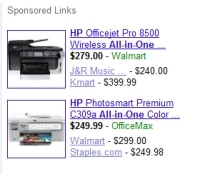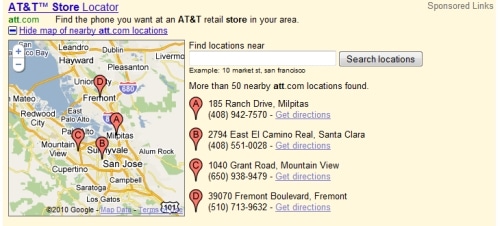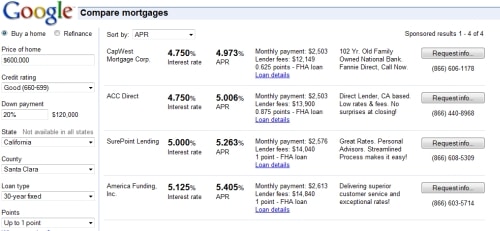There’s an old adage – If it ain’t broke, don’t fix it, unless you are carefully able to fix it in ways that helps all parties who use it & also it will make you more money, then you should think about trying to fix it, so good luck with this. Google essentially took this approach when they began testing new Adwords ad formats last year.
While opportunity with these new formats is apparent and massive, information is limited, compared to the abundance of tutorials & tools available for classic ads. What the heck are these new ad formats, how do I get them, & how do I use them to make mad guap? Welcome to Not Your Father’s Adwords, the first afternoon session on the SMX West advanced track.
Matt Van Wagner of Find Me Faster moderated, bringing up first Nicholas Fox, Director of Product Management and Ad Quality at Google. Nicholas’s team is responsible for rankings, quality score and all the other “little details” involving text ads on Google SERPs.
Nicholas noted that Google ads have not changed very much… format still composed of a blue link, finite amount of text, and green URL. Meanwhile, consider the search results on Google- there’s an explosion of the variety of content, video results, news results. A.k.a.: blended or universal search.
Google has noted that universal search formats are quite effective- working well for users. Google’s course of action now is to keep employing the tried and true philosophy of “the right information to the right user at the right time” and to apply this to the expanding Google ad format.
Ad Sitelinks
The theory on sitelinks goes like this: if you’ve got the right website to answer a query, the best thing you can do is help the user get to the right page in that website. This has been a feature in the SERPs for a while, but Google has just recently started testing this concept within the ad platform over the last 6 months.
The first two lines of the ad are typical ad format, but below the ad are four deep links that go further inside the site. Additional opportunity exists with the “deal of the day” link, for example. Nicholas notes that there’s been amazing creativty with this format. On Black Friday, retailers ran sitelinks with a heavy focus on the holiday deals inside of the site. The results Nicholas has seen have exceeded any other tests in ad formats… namely, a 30-40% increase in CTR on average when advertisers adopt this.
Product Advertising
A significant number of people come to Google ready, willing and eager to buy products. Typically, ads don’t go far enough when it comes to delivering content for users regarding specifics of products.
In this example, six different HP products are featured along with their specific item name, product type and retail price. Think of these sponsored ads like a storefront on Google… just like window shopping past an HP store in the mall. This type of ad is created by associating your Google merchant center feed with your Adwords account. The ads are still CPC-based and keyword targeted.

Local Advertising
Local is accrues a large portion of geo-targeted queries on Google, as you can imagine. Advertiser budgets, correspondingly, are also local. Google sees two types of advertisers in this space: local businesses (like plumbers, chiropractors etc.) and large, national chains (like Starbucks). Looking for a dentist in San Francisco?
Though the typical local map box still appears, the top ad also features a link that says “Show map…” where you immediately get the location of the dentist on the map, a phone number and a larger map view right within the ad.
Looking to buy a phone? Type in “AT& T store” and you’ll see a display map with various locations of AT&T stores. As you move the map around, it automatically updates with new AT&T store locations.
Comparison Ads
Nicholas noted that these are the most radically different advertising format from the other advertising types we all know and love. Type in “Mortgages” and the top result allows you to compare mortgage rates.
You can also click a button that allows you to refinance and compare rates. Nicholas pointed out that all user-specified attributes on the left of the comparison are targetable and biddable by the advertiser (in this case, the lender).
Nicholas expects Google to tinker with new things over time, as 2010 will be the year for experimentation. He encourages us to try with them.
Speaking next was Clix Marketing’s David Szetela.
David set out to describe how agencies and advertisers can best put these new ad types into practice.
If you think about Google’s mission to present relevant information, and you use relevant information to mean not just the page, but the conversion action, then what Google’s doing is moving users closer to the conversion action. This cuts down on time and space between the search query and fulfillment of the action. This is good!
Szetela on Sitelinks
David pointed out that while the main consensus is that sitelinks are the least exciting new ad format opportunity, he happens to finds them the most exciting of all. His team jumped all over this discovery, adding both additional persuasive language and well as sales discounts. They saw up to a 60% increase in CTR.
Currently, Google lets you specify up to 10 sitelinks for display. However, only four are displayed in the sitelinks ad at any given time. You obtain these when your ad naturally earns/deserves the #1 position of the page, i.e.: the top of the left hand column. This isn’t just based on brand terms- it’s any ad/keyword combination that deserves a #1 position. If you translate this into CTR and quality score, keep doing what you’re doing and strive to maximize these factors. Don’t exclude conversions/conversion rates, but for the sake of attaining a top position, your goal should be to obtain exceptional rates and scores, along with a double digit CTR, at least.
(These ads will appear automatically in your campaigns if you are qualified. Check out your campaign settings, then the Networks Devices and Extensions, and you if you’re qualified, you’ll see an “ad extensions” option. Open that- you will see boxes for your “10 Link Text and Destination URLs.” In David’s experience, only the first four have been displayed.)
Szetela on Product Extensions
Product Extensions are really a matter of submitting a product feed via Google Merchant Center (formerly Google Base). This process is actually quite easy- just an XML feed you export for your product. You don’t have to do your entire product feed right off the bat, either.
When your submitted product feed is approved by the Google Merchant Center, you should see an option for Google Product Extension Ads under Networks Devices and Extensions. This is prime real estate for persuasive pictures, text and links.
Szetela on Product Listings
These are different than the other new ad types because of the ability to display images links and prices, and also because the clicks are free (except for the ones that spur conversion), which David thinks is fantastic.
To use this, you must either be part of the Google affiliate network or another affiliate program.
Tracking New Ad Formats
The good news: for product extensions, you’ll have way more data than you’ll ever need. Data points like “how many times the plus box is expanded vs. how many times it’s not.” Just awesome.
The bad news: with sitelinks, there’s no intrinsic tracking in Google reporting. However, there’s an easy solution through Google Analytics by tagging each sitelink with a different goal setting.
For some lead-gen companies, expect to see the ability for users to submit their information right within the ad itself. David expects this type of ad a lot more across more search engines and also within the content network- never having to lead to the site itself. There’s a lot of potential power here, seeing as you don’t have to interrupt the flow of what the user is doing on the page itself.
Matt Van Wagner: David, let’s say you got all these great pictures and sitelinks, and someone spends all their time here instead of your site… does a ten dollar long-term customer now become a one-dollar one time customer?
David: My intuition says that if I’m getting more people converting closer to the search action, I will get more people converting- period. I always assume people doing searches have Adult Deficit Disorder.
Speaking last was Cory Nielsen, Performance Marketing Evangelist at Mercent Corporation.
Retail Focused Ad Formats
Cory pointed out that 25% of users doing a product search actually start on Google shopping. The bummer part of the product listing ads are that the platform is still in beta, so only a limited number of people are using it. Still, it is very exciting.
When he does a keyword search on his favorite shoe (the Brooks Beast, FYI), the brand wasn’t even included within the first 20 organic results. However, their ad claimed the top spot on the first SERP.
What should I know about these new ad types?
Sure, they are easy to launch- but these new ads can definitely be a mess. One issue: you’re only sending one feed through Google Merchant Ad Center, which goes out to three different ad networks:
- the affiliate network
- AdWords
- Product searches
Be aware that if you’re the person editing and/or optimizing the shopping product feed, you’re affecting the affiliate marketing team as well as the paid search marketing team.
Performance Attribution
Concerning product listing ads, it’s best to use the Google affiliate network to track performance. The network also supports unique product URLs and tracking variables. However, when it comes to product extensions, the cost is tracked to AdWords. Depending on how you’re setup, your sales are going to be tracked to Google Product Search rather than through your AdWords campaign.
Product Listing Ads Overview
In general, Corey has seen low CPCs, but lower conversion rates with PLAs. Ultimately, return on ad spend has been very favorable. Now, PLAs account for 11% of all shopping feed marketing revenue.
You might ask, “Won’t this affect the revenue generated from Google Product Search, which is free?”
Corey says, the nice thing is that it’s not really affecting anything adversely. His team saw a 30%-50% YoY increase in revenue from Google Product Search.
The best reason to do this is it will help lead to your control of your brand in the SERP. If you do a search for UGG boots, Zappos has 20% of the on-page real estate.
SERPs domination tips:
- When it comes to product listing ads, you have the the ability to set category level commission in GAN … as more merchants join, it’s going to get more and more competitive.
- For product extensions, you have the ability to send your feed and have Google pick your products for display. But your goal should be to suggest the keywords for product listing. Adding keywords can increase CTR by 1.7 times.
- For GPS onebox, remember that about 80% of Google Product Search traffic comes from that Google onebox… do what you can to get your products listed there.
So essentially, Google is awesome for helping the consumer and marketers. It’s going to get messy, but investing in the platform is totally worth it.

















